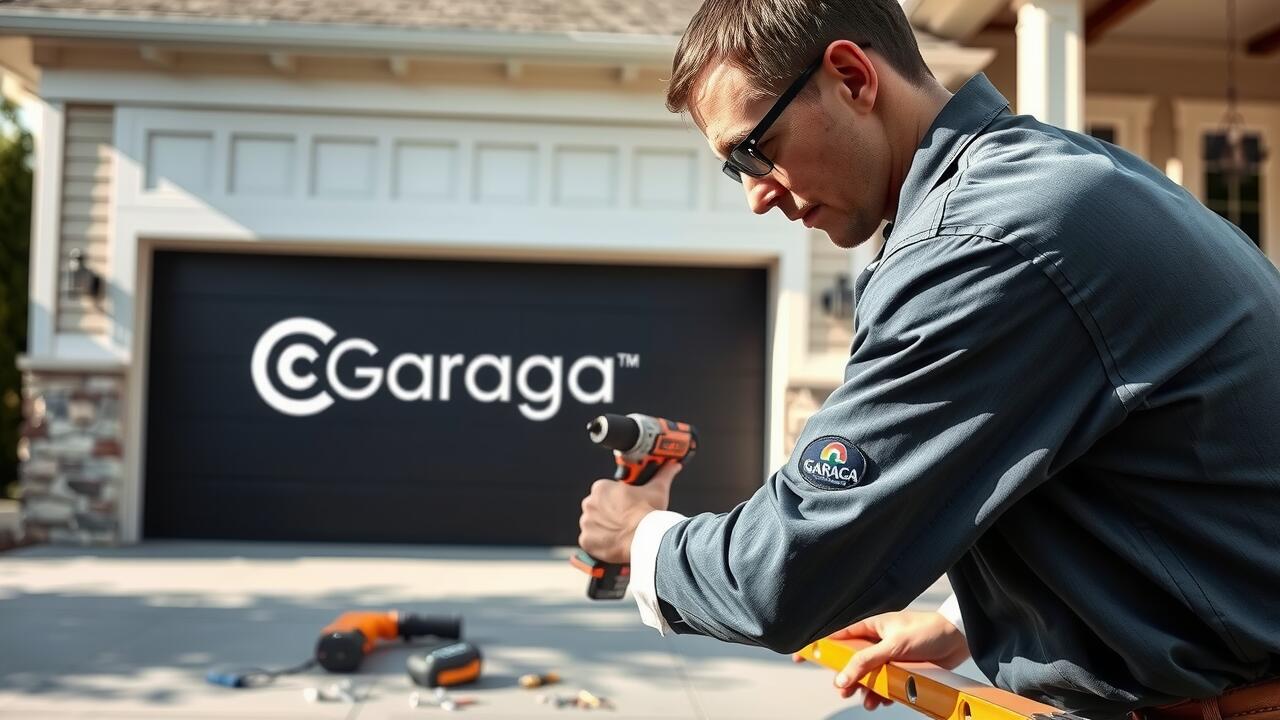Insulated vs. Non-Insulated Doors
When it comes to garage doors, the choice between insulated and non-insulated options significantly impacts energy efficiency and comfort. Insulated doors consist of materials designed to reduce heat transfer, keeping your garage warmer in the winter and cooler in the summer. This can be particularly beneficial if the garage is used for activities beyond storage, such as a workshop or additional living space. In contrast, non-insulated doors offer less thermal resistance, potentially leading to higher energy costs and less comfort in extreme weather conditions.
Homeowners in Sherwood Park, Alberta, may find that the harsh winters and mild summers make insulated options more appealing. A local provider like Garaga Garage Door in Sherwood Park, Alberta, can offer various insulated door designs, which reflect modern aesthetics and functionality. By choosing an insulated door, you not only enhance your garage’s energy efficiency but also improve its overall look and feel, making it a worthwhile investment for any homeowner.
Key Differences and Benefits
Choosing between insulated and non-insulated garage doors significantly impacts energy efficiency and comfort. Insulated doors often utilize materials like polystyrene or polyurethane, creating a barrier that helps maintain stable temperatures. This can reduce heating and cooling expenses, particularly in climates with extreme temperatures. In contrast, non-insulated doors may be more affordable initially but can lead to higher energy costs over time due to temperature fluctuations.
The benefits of insulated garage doors extend beyond energy savings. They also provide soundproofing advantages, which can be essential if the garage serves as a workspace or recreational area. Additionally, an insulated door enhances the overall durability and strength of the garage structure. Residents who invest in a Garaga Garage Door in Sherwood Park, Alberta, often notice the added protection against the elements, thereby prolonging the lifespan of their garage entrance while improving their home’s overall aesthetic appeal.
R-Value Explained
R-value is a measure of insulation effectiveness, indicating how well a material can resist heat flow. The higher the R-value, the better the insulation, which is critical for maintaining comfortable temperatures within a garage space. Due to the garage’s direct exposure to varying outdoor conditions, selecting a door with a substantial R-value can significantly impact energy efficiency. Insulated garage doors typically have higher R-values, making them a preferred choice for homeowners seeking enhanced temperature control.
When considering a garage door, it is essential to understand how the R-value relates to your specific needs. If you live in areas with extreme weather conditions, investing in a garage door with a high R-value provides additional benefits, including energy savings and improved comfort. For example, Garaga Garage Door in Sherwood Park, Alberta, offers a variety of insulated options designed to withstand cold winters while minimizing heat loss, ultimately creating a more energy-efficient home environment.
How R-Value Measures Insulation Effectiveness
R-value is a crucial metric for evaluating insulation effectiveness in garage doors. It signifies the thermal resistance of the material, with higher numbers indicating better insulating properties. This measurement helps homeowners understand how well a door will resist heat transfer, keeping the garage warmer in winter and cooler in summer. For those considering an insulated garage door, reviewing the R-value can assist in making an informed decision about energy efficiency and comfort.
When choosing a garage door, it’s vital to consider the overall R-value in the context of local climate conditions. Regions with extreme temperatures require higher R-values to maintain energy efficiency. Garage doors available from providers like Garaga Garage Door in Sherwood Park, Alberta, often feature various insulation options tailored to meet these needs. Evaluating the R-value ensures that homeowners select a garage door that aligns with their specific insulation requirements and climate challenges.
Choosing the Right Insulation
When selecting the right insulation for a garage door, various factors come into play. Homeowners should consider their climate, as well as specific needs such as temperature control and energy efficiency. Different materials, such as polystyrene or polyurethane, offer varying levels of insulation. Additionally, the door’s construction can greatly influence its overall thermal performance. Selecting a reputable brand like Garaga Garage Door in Sherwood Park, Alberta, ensures a high standard of quality and durability.
The installation process and garage door design also significantly impact the effectiveness of insulation. A well-insulated garage door minimizes drafts and can help reduce energy costs over time. Customisation options could provide tailored solutions to fit specific garages, making it essential to consult professionals. Choosing the right insulation not only improves comfort but could enhance the overall functionality of the garage space.
Factors to Consider for Your Garage Door
When selecting an insulated garage door, several factors come into play to ensure you make the right choice. First, consider the local climate. In colder regions, having a door with a higher R-value helps maintain a stable temperature in your garage, preventing unnecessary heating costs during winter months. This factor is particularly crucial for homeowners who frequently use their garage as a workspace or extra storage.
Another essential consideration is the material of the door. Steel, for example, is known for its durability and excellent insulation properties, making it a popular choice among homeowners. If you reside in Sherwood Park, Alberta, options like the Garaga Garage Door offer various insulated models designed to withstand harsh weather conditions while providing energy efficiency. The aesthetic appeal of the door should also match your home’s exterior to ensure a cohesive look while maintaining functionality.
FAQS
What is the main difference between insulated and non-insulated garage doors?
Insulated garage doors are designed with materials that reduce heat transfer, helping to maintain a stable temperature inside the garage, while non-insulated doors lack these features and can result in fluctuating temperatures and higher energy costs.
What is R-Value and why is it important in garage doors?
R-Value measures the thermal resistance of materials; a higher R-Value indicates better insulation effectiveness. In garage doors, a higher R-Value means improved energy efficiency and better temperature control within the garage space.
How can I determine the right insulation for my garage door?
When choosing insulation for your garage door, consider factors such as your climate, the intended use of the garage, energy efficiency goals, and the door’s material. It’s also essential to review the R-Value to ensure optimal insulation performance.
Are there specific materials that provide better insulation for garage doors?
Yes, materials like polyurethane foam and polystyrene are known for their superior insulation properties. Steel doors with these insulation options generally offer the best thermal performance.
Can upgrading to an insulated garage door save me money on energy bills?
Yes, upgrading to an insulated garage door can lead to significant savings on energy bills by reducing the amount of heated or cooled air lost through the garage, especially in extreme weather conditions.

